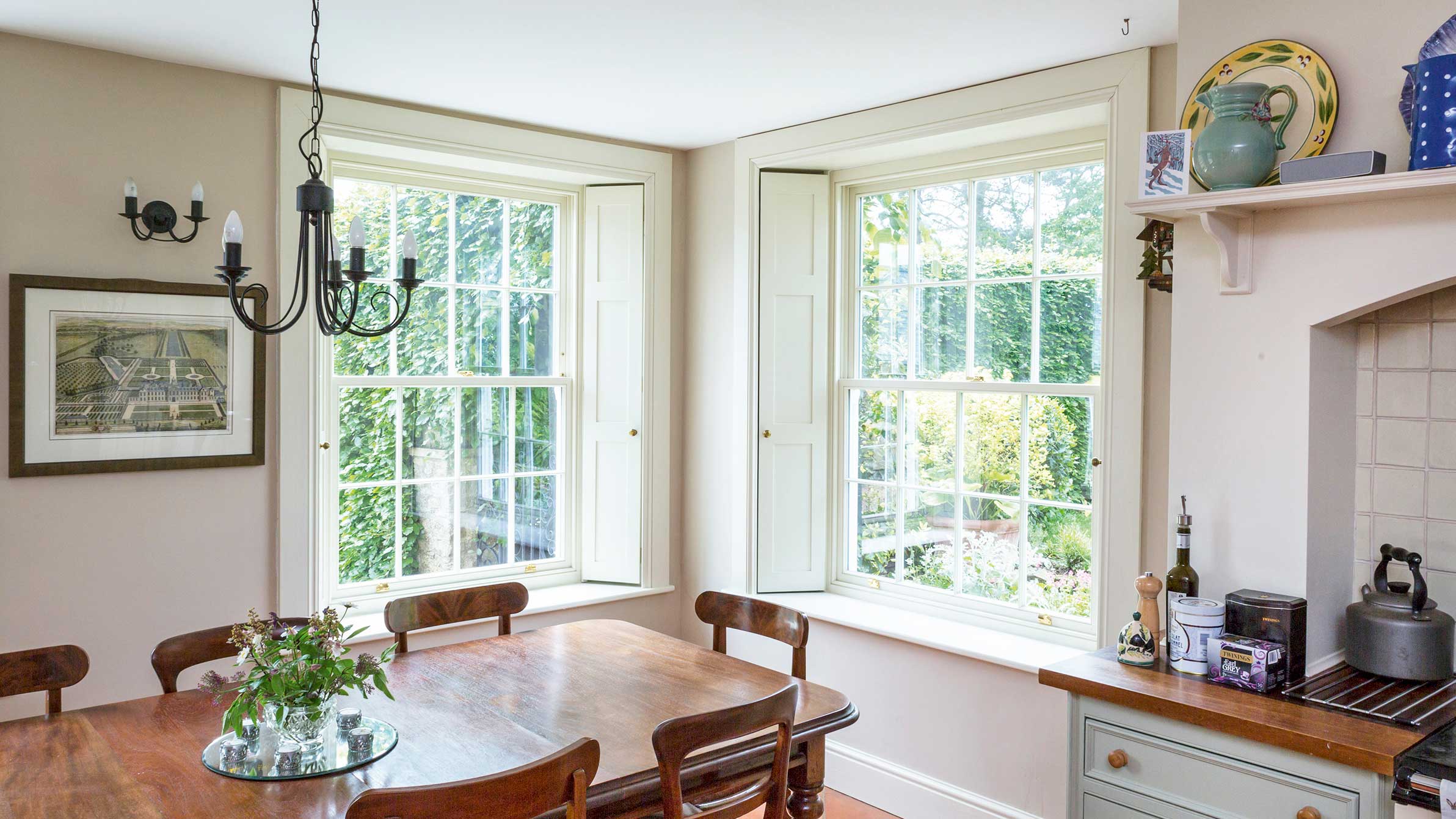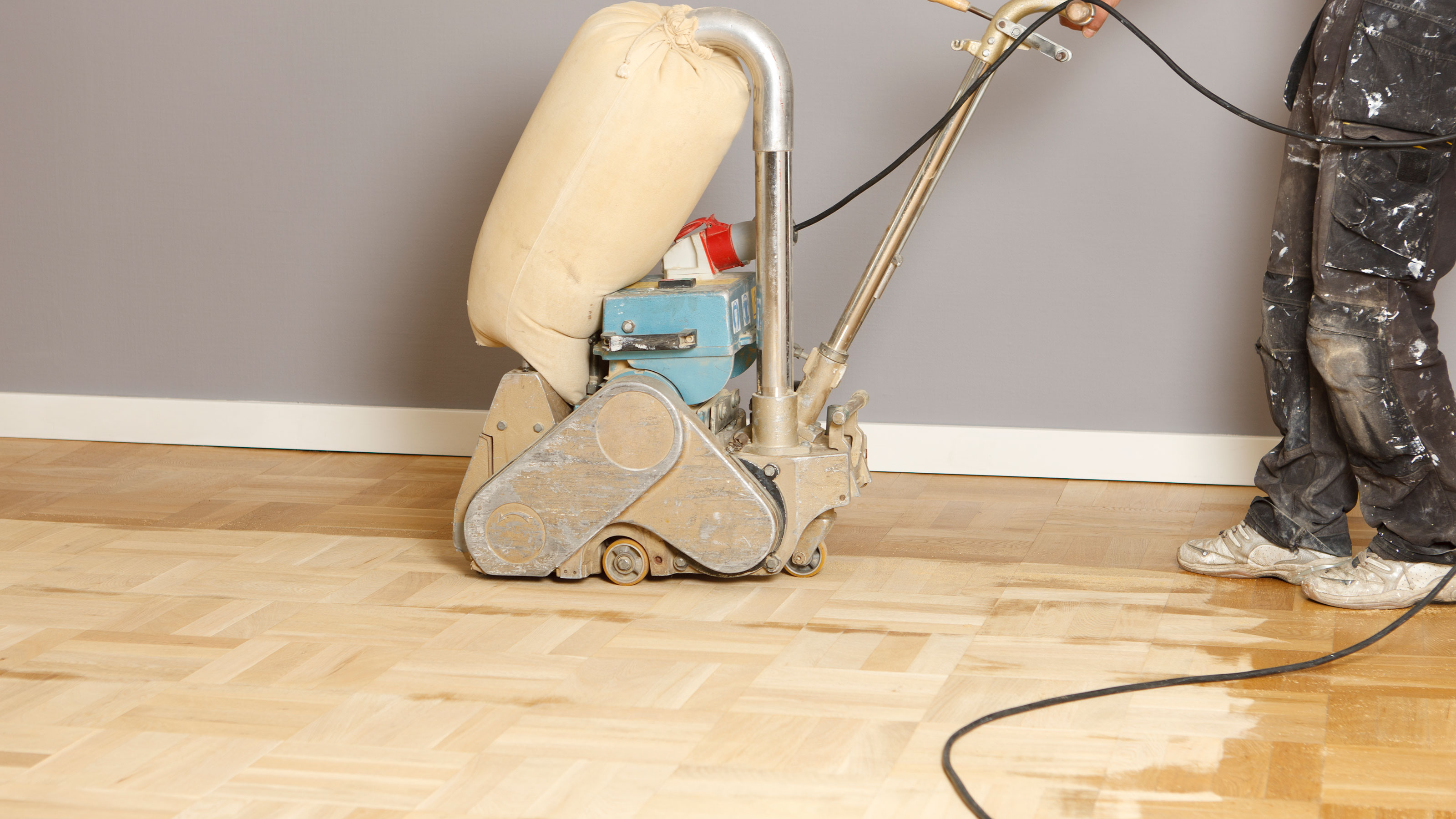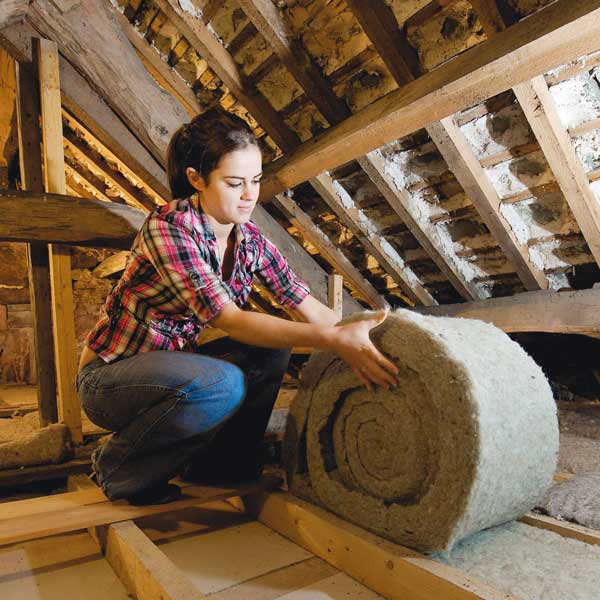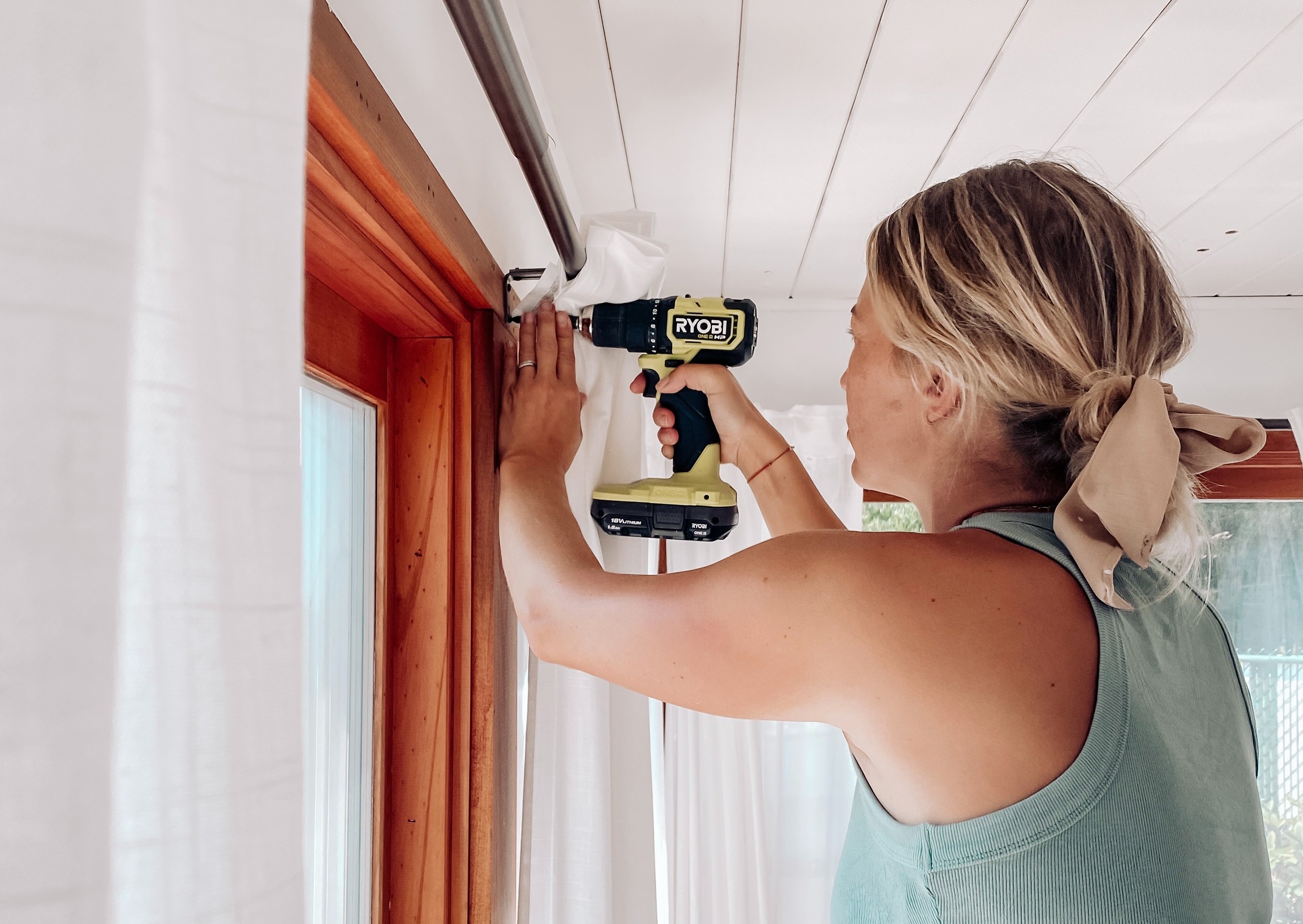

Whichever type of windows you have, they are crucial to your home’s energy efficiency as well as to its appearance, contributing to the property’s curb appeal. So knowing how to install a window yourself can be a necessity to save you money.
‘Once windows start to reach 40 years old, they’re typically prone to breaking down and allowing for a draft or water to leak in,’ says Yanni Avramidis, owner and operator of Rooftop Designs.
‘If you’re feeling wind blowing through your home, it’s possible your windows may be warped and costing you extra money on your utility bills. That’s because air conditioning and heating units have to overcompensate to maintain the temperature. Also, if left unchecked, water leaks can do untold damage to wood floors, paint and carpet. Common defects to look for include broken or bent frames, no outside caulk seal, broken glass, decayed wood, water inside your home or leaks in between the two glass panes.’
If that’s the case for your home and you’re wondering how to install a window in a home, you’ll be delighted to hear that it is a job you can do yourself if you prefer DIY to calling a contractor in.
How to install a window
Select a remodel window sized to fit the existing opening. If you can’t obtain a window that fits, you can have one custom made instead, but this is much more expensive.
If your new window has installation instructions that differ from ours, make sure you follow these for correct installation.
To replace a window, you will need:
- Tape measure
- Safety goggles
- Work gloves
- Painter’s tape (if required)
- Utility knife (if required)
- Replacement window
- Level
- Caulk
- Caulk gun
- Screws
- Drill
- Saw
- Shims and wood blocks
- Fiberglass insulation
- Finishing nails
1. Measure the opening
In order to purchase a remodel window of the right size, you’ll first need to measure the window opening. It is essential to measure in more than one place.
Measure the height of the existing window frame from where the bottom sash meets the sill to where the top sash meets the head. Measure in the center of the window and on either side, and note each measurement.
Then measure the width of the window frame from the outside edge of the stop molding to the other outside edge in the middle and at top and bottom. Note the measurements.
Use the smallest measurement for both height and width when you’re buying a new window. The window needs to be around 0.75 inches (19mm) smaller than the opening.
2. Remove the existing window
Wearing safety goggles and work gloves, take out the existing window.
Apply painter’s tape to any cracked panes of glass for safety, then remove the interior stop molding with care and set aside for possible re-use.
Remove the fasteners that secure the old window to the frame; if your window has any cords or chains and weights, cut these and remove them.
Lift out the window.
Remove any protruding fasteners, and pull out any metal channels around the window.
3. Prepare for the new window and dry fit
Check the opening and remove all caulk around it. Fill any holes, too and replace any areas that are damaged.
Make sure the exterior stop molding (blind stop) is in good condition, and replace it if this is not the case.
Dry fit the window by centering it in the opening (you may want someone to help you with this stage). Use wood blocks and shims for support. Check the window is plumb and level and adjust shims if necessary.
‘In every window replacement, make sure to check both sides for the plumb,’ says Robert Johnson, founder of Sawinery. ‘This is what people often forget or disregard, but it is one of the most important procedures when replacing a window.’
3. Fit the new window
Caulk around the inside of the exterior stop moulding, and place the window in the opening, pressing it against the caulk.
Put in shims where the window’s pre-drilled holes are. To check that the window is square in the opening, measure its diagonals. If they are equal, the window is square. Not equal? Adjust the shims until they are and the window is square.
Fix screws into the holes through the shims and into the frame. Trim the shims. Check again that the window is level.
Fill any gaps around the window with fiberglass insulation.
Fit interior stop moulding with finishing nails.
Can you replace a window without removing the siding?
You can replace a window without removing the siding if the frame, along with the sill and the jambs, are in good condition in which case the siding doesn’t need to be disturbed.
However, if there’s damage or rot, removal and replacement of some of the siding and the exterior trim will be necessary.
Home with a different type of construction? Those with shingles or stucco rather than brick can involve removal of exterior trim and cutting back exterior finish. ‘Why? To properly fasten the unit within the opening and to install proper waterproofing elements (such as copper pans, membrane on sides and upper edge as well as drip caps),’ says construction expert and coach Monika Zasada of DE-MAZING.
How to replace a window sill
If the interior sill of your window needs replacing because it’s rotten or damaged beyond repair, use a utility knife to cut the caulk between it and the trim, then cut underneath the sill along the trim board.
With a putty knife positioned between the wall and the trim, pry the trim off the wall, and remove any nails.
Open the window and remove the side window trim with the putty knife. Wedge a chisel under the sill and loosen it, working on all sides until it can be removed.
Get rid of old caulk and any debris on the framing.
Use the old sill as a template for the new version and mark the shape on the wood with a pencil. Cut it out with a table saw. Check the fit, then sand the edges.
Tap the sill into place with a rubber mallet. Nail into place at the back corners with finishing nails and nail along the back at around 10 inch (254mm) intervals.
Replace trim at sides of the window and underneath and sink nails using a nail set. Fill any holes with wood putty. Re-caulk seams, corners and cracks.
How to replace a window pane
You can replace a single glazed pane yourself. Make sure you take the old pane out first, wearing work gloves and safety goggles. Put a dust sheet on the ground before you start to catch the shards, and tap the old pane with a hammer, working from the top. Aim to create large pieces of glass where possible.
Remove the old putty and any remaining glass. Clean the frame of dust. Apply primer to bare wood.
Knead the putty with your hands then press into the frame. Press the new pane into the putty. Make sure you use even pressure around the edges.
Fix the glass into place using glazier’s points. Trim excess putty.
Apply putty to the front of the glass and smooth to form a triangular line using a putty knife. Make a neat crease in each corner.
Leave the putty for around two weeks to harden before painting.
Join our newsletter
Get small space home decor ideas, celeb inspiration, DIY tips and more, straight to your inbox!

Sarah is a freelance journalist and editor writing for websites, national newspapers, and magazines. She’s spent most of her journalistic career specialising in homes – long enough to see fridges become smart, decorating fashions embrace both minimalism and maximalism, and interiors that blur the indoor/outdoor link become a must-have. She loves testing the latest home appliances, revealing the trends in furnishings and fittings for every room, and investigating the benefits, costs and practicalities of home improvement. It's no big surprise that she likes to put what she writes about into practice, and is a serial house revamper. For Realhomes.com, Sarah reviews coffee machines and vacuum cleaners, taking them through their paces at home to give us an honest, real life review and comparison of every model.
-
 Get free tickets to the London Homebuilding & Renovating Show at the ExCeL
Get free tickets to the London Homebuilding & Renovating Show at the ExCeLGet FREE tickets worth £36* to the London Homebuilding & Renovating Show, ExCeL, 30 September - 2 October 2022.
By Camille Dubuis-Welch
-
 How to fix a green pool fast
How to fix a green pool fastProperly cleaning and shocking your pool will help restore it to its former blue glory, fast. This is what to do to stop a green pool full of algae, spoiling your summer fun
By Anna Cottrell
-
 How to sand and refinish hardwood floors: A 10-step guide for pro results
How to sand and refinish hardwood floors: A 10-step guide for pro resultsYou don't need to call in the pros to refinish hardwood floors. It's possible to restore yours with rentable tools, like a sander, and our expert advice
By Sal Vaglica
-
 How much does it cost to remove popcorn ceiling?
How much does it cost to remove popcorn ceiling?Are you better off paying a professional or going down the DIY route? Experts share what it costs to remove popcorn ceiling and more budget-friendly alternatives.
By Carol J. Alexander
-
 How much does attic insulation cost in 2022?
How much does attic insulation cost in 2022?Want a warmer home and lower energy bills and wondering about attic insulation cost? Get the inside track.
By Sarah Warwick
-
 Home insulation: where, how and why you should insulate a house
Home insulation: where, how and why you should insulate a houseThe right home insulation will make your home warmer in winter, cooler in summer, and reduce energy bills.
By Sarah Warwick
-
 How long do windows last; plus signs it's time to replace yours
How long do windows last; plus signs it's time to replace yoursToday's windows last a long time, but eventually, they'll need replacing. Here's how to know which type of windows last the longest, plus when it's time to replace your windows
By Sal Vaglica
-
 RYOBI ONE+ HP 18V cordless drill and driver review: A toolbox must have for the avid or beginner DIYer
RYOBI ONE+ HP 18V cordless drill and driver review: A toolbox must have for the avid or beginner DIYerThe RYOBI ONE+ HP 18V cordless drill and driver is a convenient, budget-friendly addition to the brand's ONE+ line
By Liz Hartmann